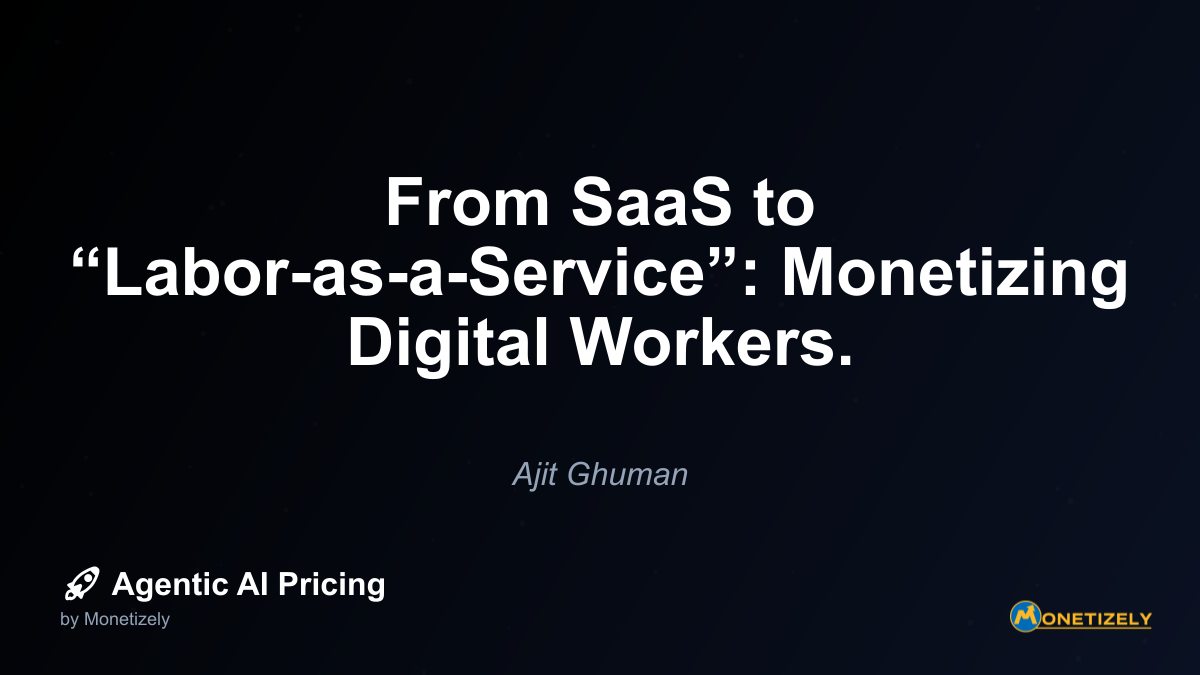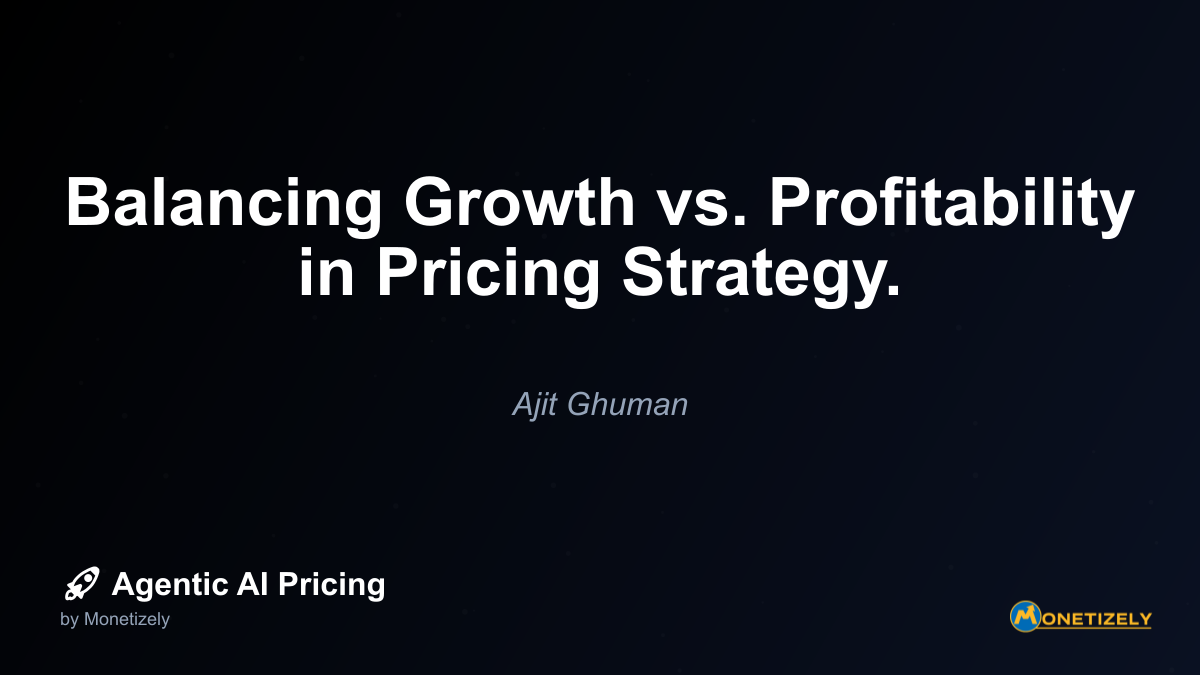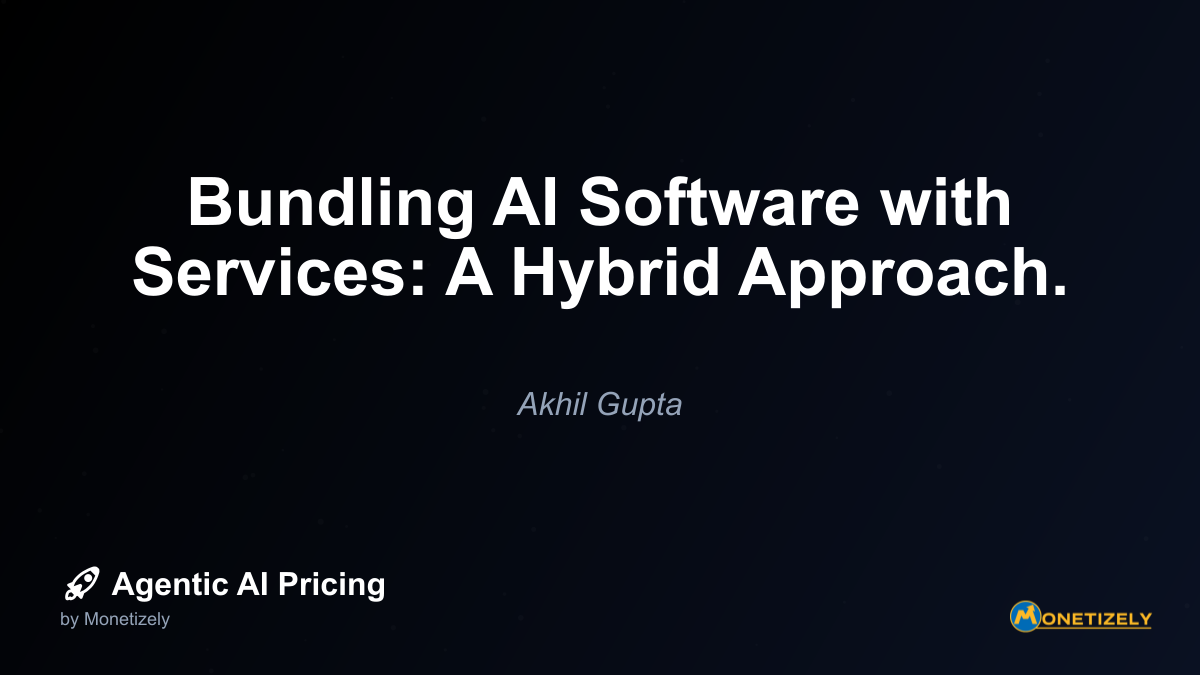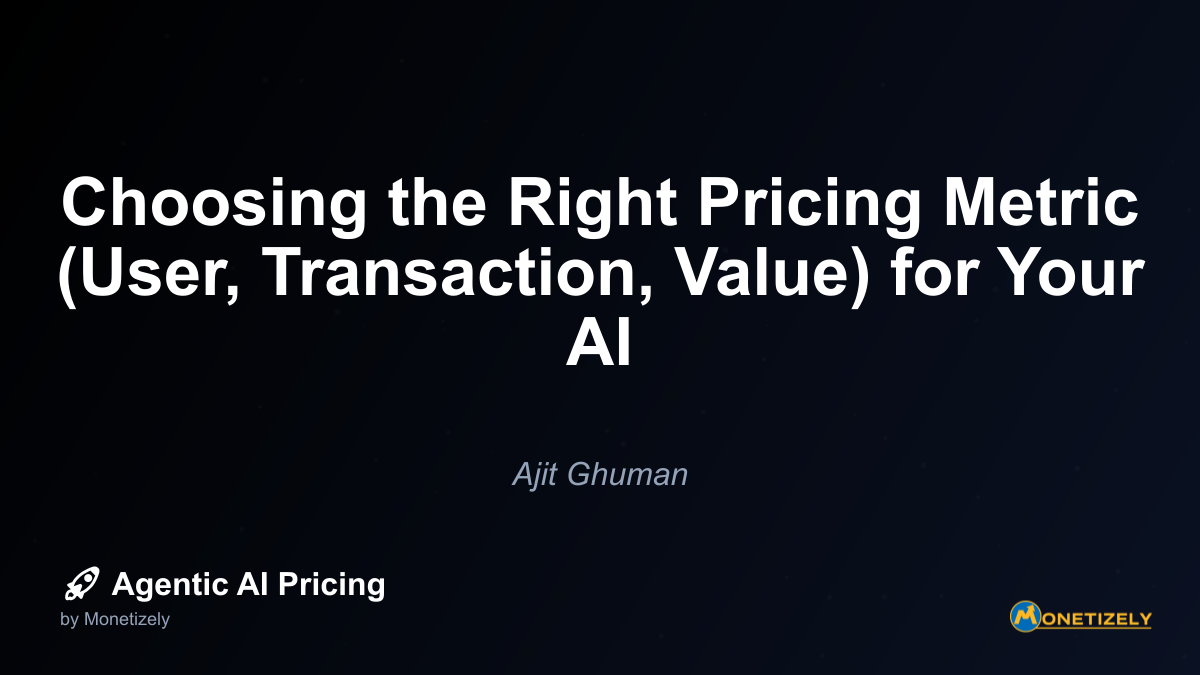· Ajit Ghuman · Strategy & Planning · 10 min read
From SaaS to “Labor-as-a-Service”: Monetizing Digital Workers.
AI and SaaS Pricing Masterclass
Learn the art of strategic pricing directly from industry experts. Our comprehensive course provides frameworks and methodologies for optimizing your pricing strategy in the evolving AI landscape. Earn a professional certification that can be imported directly to your LinkedIn profile.

In a business landscape increasingly shaped by artificial intelligence, a profound shift is occurring in how we conceptualize and monetize AI capabilities. The traditional Software-as-a-Service (SaaS) model has dominated the digital economy for decades, but a new paradigm is emerging: Labor-as-a-Service (LaaS). This revolutionary approach treats AI not merely as software to be licensed, but as digital workers to be employed, compensated, and managed.
This transformation isn’t merely semantic—it represents a fundamental rethinking of the relationship between businesses and their technological resources. As AI agents become increasingly autonomous, capable of independent decision-making and complex task execution, the line between software tool and digital employee continues to blur.
The Evolution from SaaS to Labor-as-a-Service
The SaaS revolution democratized access to enterprise-grade software, replacing hefty upfront licensing fees with subscription-based pricing models. This shift made powerful software accessible to businesses of all sizes while providing vendors with predictable recurring revenue streams. SaaS pricing typically revolves around features, user seats, usage volume, or some combination thereof.
However, as AI capabilities advance beyond simple automation toward true agency, traditional SaaS pricing structures struggle to capture the unique value proposition of autonomous digital workers. When an AI system can independently research, analyze, create, and execute—much like a human employee—shouldn’t its pricing model reflect this fundamental difference?
Labor-as-a-Service represents this next evolutionary step. In this paradigm, organizations don’t merely subscribe to software; they effectively “hire” digital workers with specific capabilities, paying for their labor rather than access to a tool.
What Exactly Is Labor-as-a-Service?
Labor-as-a-Service treats AI agents as digital workers available for “employment” without the traditional overhead of human employees. These digital workers can be:
- Deployed on demand - Scaled up or down based on workload requirements
- Specialized by function - From customer service to data analysis to creative production
- Compensated based on output or time - Mirroring traditional employment compensation models
The key distinction is that businesses are purchasing labor capacity and outcomes rather than software features. This subtle shift has profound implications for pricing strategy, value perception, and go-to-market approaches.
Why the Labor Paradigm Makes Sense for Agentic AI
Several characteristics of modern agentic AI make the labor paradigm particularly apt:
Autonomous Decision-Making
Unlike traditional software that follows rigid, predetermined paths, agentic AI systems can make independent decisions within defined parameters. They can evaluate situations, determine optimal approaches, and adjust strategies based on feedback—much like human workers.
Skill Specialization
Today’s AI agents can be specialized for particular domains and functions. Some excel at customer service, others at data analysis, content creation, or process optimization. This specialization mirrors human labor markets, where workers develop expertise in specific areas.
Capacity for Learning and Improvement
Modern AI systems improve over time through additional training and experience. This learning curve resembles human professional development, where workers become more valuable as they gain experience and master new skills.
Variable Productivity and Output Quality
The output of AI agents can vary based on the complexity of tasks, available information, and the quality of their training—similar to variations in human worker productivity.
Pricing Models for Labor-as-a-Service
The labor paradigm opens up novel pricing approaches that differ significantly from traditional SaaS models. Here are some emerging frameworks:
Hourly or Time-Based Pricing
Similar to consulting or contract work, AI agents can be “billed” based on the time they spend working on tasks. This model is particularly appropriate for:
- Complex, variable tasks where output is difficult to standardize
- Situations where the AI’s processing time correlates with value delivered
- Environments where multiple tasks might be performed in a single session
For example, a company might offer an AI research assistant at $20 per hour of active processing time, allowing businesses to “employ” this digital worker as needed without long-term commitments.
Output-Based or Piece-Rate Pricing
This approach compensates AI based on what it produces rather than time spent, similar to piece-rate compensation for human workers. It’s well-suited for:
- Standardized tasks with clear deliverables
- Scenarios where quality can be objectively measured
- Use cases where speed of completion adds value
A content generation AI might charge per article produced, a data processing agent per dataset analyzed, or a design AI per graphic created.
Performance-Based or Commission Pricing
Perhaps the most sophisticated approach, this model ties compensation to measurable business outcomes:
- Sales-focused AI agents earning commission on conversions
- Marketing AIs compensated based on campaign performance
- Investment AIs earning fees proportional to portfolio returns
This approach aligns incentives between the AI provider and the business customer, but requires sophisticated tracking and attribution systems.
Salary or Retainer Models
For businesses with consistent, ongoing AI labor needs, a “salary” model might make sense:
- Fixed monthly fee for a defined scope of work
- Guaranteed availability of the AI resource
- Predictable expenses for budgeting purposes
This approach most closely mimics traditional employment relationships and works well for core business functions that require continuous AI support.
Real-World Examples of LaaS in Action
Several companies are already pioneering the Labor-as-a-Service approach:
Anthropic’s Claude Pro
While not explicitly marketed as LaaS, Anthropic’s subscription model for Claude Pro effectively positions their AI assistant as a knowledge worker available for a monthly fee. The emphasis on Claude’s ability to handle complex tasks independently—from research to analysis to content creation—frames it more as a digital employee than a mere tool.
Adept AI’s Action Models
Adept positions its AI solution as a “digital coworker” that can understand and execute complex workflows across applications. Their pricing approach focuses on the AI’s ability to perform valuable work rather than on software features.
Harvey AI for Legal Work
Specialized for the legal industry, Harvey AI is marketed as a digital legal assistant that can draft documents, conduct research, and analyze contracts. Its pricing reflects the value of specialized legal labor rather than traditional software licensing.
Cognition Labs’ Devin
Marketed as “the first AI software engineer,” Devin is explicitly positioned as a digital worker capable of building software applications from scratch. This represents perhaps the purest expression of the LaaS model, with pricing that reflects the value of engineering labor.
The Economics of Digital Labor vs. Human Labor
The Labor-as-a-Service model invites direct comparisons between digital and human workers, with several important economic considerations:
Cost Advantages
Digital workers offer significant economic advantages:
- No benefits or overhead costs - No healthcare, retirement, or other benefits
- Unlimited availability - Can work 24/7 without overtime or fatigue
- Perfect scalability - Can be instantly duplicated to handle increased workload
- Consistent performance - No variation due to personal factors or burnout
Productivity Comparisons
When evaluating the economics of digital vs. human labor, businesses must consider:
- Speed of task completion - AI can often process information faster than humans
- Error rates - Well-trained AI may have lower error rates for certain tasks
- Creativity and innovation - Humans still generally excel at novel thinking
- Complex judgment - Humans maintain advantages in nuanced ethical decisions
- Interpersonal dynamics - Human workers bring social intelligence that AI lacks
The Hybrid Workforce Economic Model
The most economically efficient approach often involves a hybrid model where:
- Digital workers handle repetitive, data-intensive, or time-sensitive tasks
- Human workers focus on creative, strategic, and high-judgment activities
- Human managers oversee and direct teams of digital workers
- Human specialists intervene when digital workers encounter edge cases
This division of labor maximizes the economic benefits of both types of workers.
Pricing Psychology: Why LaaS Resonates with Buyers
The Labor-as-a-Service framing taps into powerful psychological factors that influence purchasing decisions:
Familiar Mental Models
Most business leaders have experience hiring employees or contractors. Positioning AI as digital labor leverages this familiar framework, making the value proposition immediately understandable.
Concrete Value Perception
When customers conceptualize AI as workers rather than software, they naturally evaluate value in terms of labor replacement or augmentation: “What would it cost to hire a human to do this work?”
Reduced Implementation Friction
The labor framing sets appropriate expectations about onboarding and integration. Just as new employees need time to learn company systems and processes, digital workers are expected to require some initial setup and training.
Enhanced Status and Innovation Perception
Companies employing digital workers may enjoy perception benefits as innovative organizations at the forefront of AI adoption—similar to how early adopters of other transformative technologies gained market distinction.
Challenges and Considerations in LaaS Pricing
While the Labor-as-a-Service model offers compelling advantages, it also presents unique challenges:
Value Calibration
Determining appropriate pricing requires careful calibration against human labor alternatives:
- Too expensive compared to human alternatives, and adoption suffers
- Too cheap, and providers leave significant revenue on the table
- Just right, and both providers and customers benefit from the efficiency gain
Quality Assurance and Performance Metrics
Unlike software features that either work or don’t, labor quality exists on a spectrum:
- How is “good work” defined and measured for digital workers?
- What recourse do customers have when digital labor quality falls short?
- How are improvements in AI worker capabilities reflected in pricing over time?
Ethical and Regulatory Concerns
The labor framing raises important ethical questions:
- Does positioning AI as workers create unrealistic anthropomorphization?
- How should digital labor be regulated compared to human labor?
- What are the implications for employment markets and economic policy?
Integration with Human Workflows
For maximum effectiveness, digital workers must integrate seamlessly with human teams:
- How do human managers effectively direct and evaluate AI labor?
- What communication interfaces work best between human and digital workers?
- How are responsibilities and accountability divided in hybrid teams?
Implementation Strategies for LaaS Pricing
For companies considering Labor-as-a-Service pricing models, several implementation strategies can increase chances of success:
Start with Clear Use Cases
Begin by identifying specific labor functions where AI can deliver immediate, measurable value:
- Customer support inquiries of specific types
- Data processing and analysis workflows
- Content creation for defined formats
- Research tasks with clear parameters
Develop Appropriate Performance Metrics
Create transparent metrics that accurately reflect the value of the digital labor:
- Task completion rates
- Quality assessments
- Time savings compared to human alternatives
- Business outcome improvements
Create Transparent Billing Systems
Develop billing systems that provide customers with clear visibility into:
- What work was performed
- How much time or resources were utilized
- What outcomes were achieved
- How value compares to alternatives
Build Feedback Loops
Establish mechanisms for continuous improvement based on customer feedback:
- Regular performance reviews of digital workers
- Opportunities for customers to provide training guidance
- Clear processes for handling exceptions and edge cases
The Future of Labor-as-a-Service
As AI capabilities continue to advance, we can anticipate several evolutionary developments in the LaaS model:
Digital Labor Marketplaces
Just as platforms like Upwork and Fiverr created marketplaces for human freelancers, we may soon see digital labor marketplaces where:
- Businesses can “hire” specialized AI agents for specific projects
- Ratings and reviews help identify high-performing digital workers
- Competition drives continuous improvement in capabilities
- Price discovery mechanisms reflect true market value of different AI skills
AI Labor Management Platforms
New software categories will emerge to help businesses manage their digital workforce:
- Platforms for assigning tasks to optimal AI workers
- Performance monitoring and quality control systems
- Training and improvement workflows
- Integration tools for human-AI collaboration
Specialized Digital Labor Agencies
Similar to staffing agencies for human workers, specialized firms may emerge that:
- Curate and pre-vet high-quality AI workers for specific industries
- Provide customization and training services
- Offer managed services with quality guarantees
- Handle compliance and risk management
Evolving Compensation Models
As the market matures, we’ll likely see increasingly sophisticated compensation approaches:
- Hybrid models combining base rates with performance incentives
- Long-term contracts with built-in learning curves
- Profit-sharing arrangements for high-value applications
- Dynamic pricing based on demand and specialization
Conclusion: Bridging Two Economic Paradigms
The emergence of Labor-as-a-Service represents more than just a novel pricing approach—it signifies a fundamental shift in how we conceptualize the relationship between businesses and artificial intelligence. By bridging the economic paradigms of software licensing and human employment, LaaS creates a new framework that better captures the unique value proposition of agentic AI.
For business leaders navigating this transition, the labor paradigm offers both clarity and challenges. It provides an intuitive framework for evaluating AI investments against familiar labor alternatives while raising important questions about management, integration, and ethical deployment.
As AI capabilities continue to advance, the distinction between digital and human labor will become increasingly significant in strategic planning. Organizations that successfully integrate both types of workers—leveraging the unique strengths of each—will gain substantial competitive advantages in efficiency, scalability, and innovation.
The Labor-as-a-Service model isn’t merely a pricing innovation; it’s a new lens through which to view the fundamental relationship between humans, technology, and productive work in the emerging economy. As we continue to explore this frontier, the organizations that thoughtfully develop their digital workforce strategies will be best positioned to thrive in an increasingly AI-augmented business landscape.
Co-Founder & CEO
Ajit is the author of Price To Scale, a top book on SaaS Pricing and is the Founder of Monetizely. Ajit has led and worked in pricing and product marketing at firms like Twilio, Narvar and Medallia. His work has been featured in Forbes and VentureBeat. Ajit regularly consults with software companies from Seed stage to post-IPO on pricing strategy. Ajit is also a highly-rated co-instructor for 'The Art of SaaS Pricing and Monetization' on Maven.
Pricing Strategy Audit
Let our experts analyze your current pricing strategy and identify opportunities for improvement. Our data-driven assessment will help you unlock untapped revenue potential and optimize your AI pricing approach.




